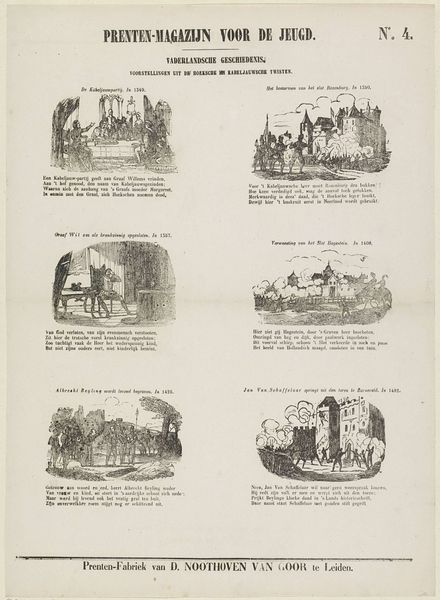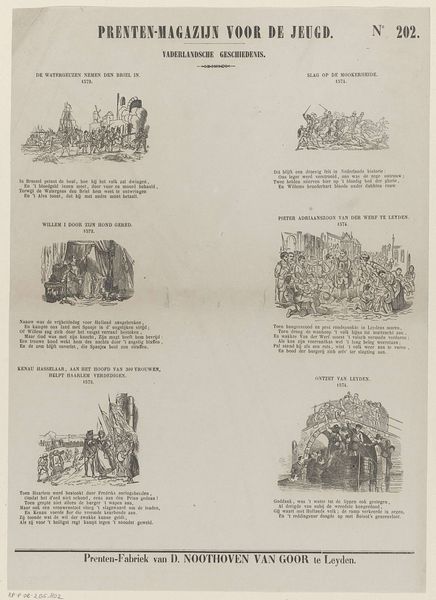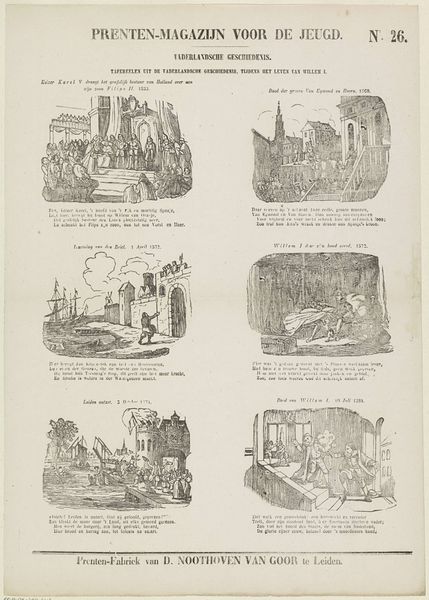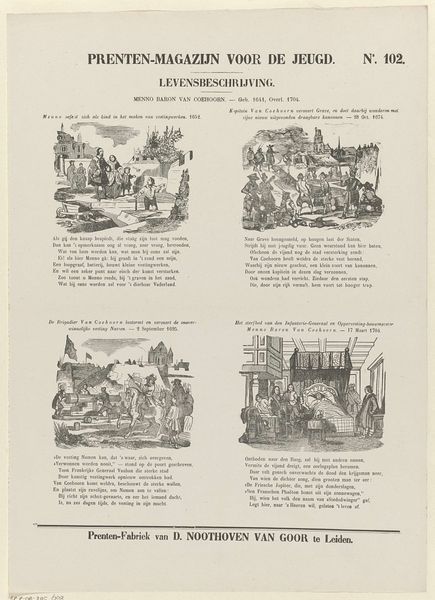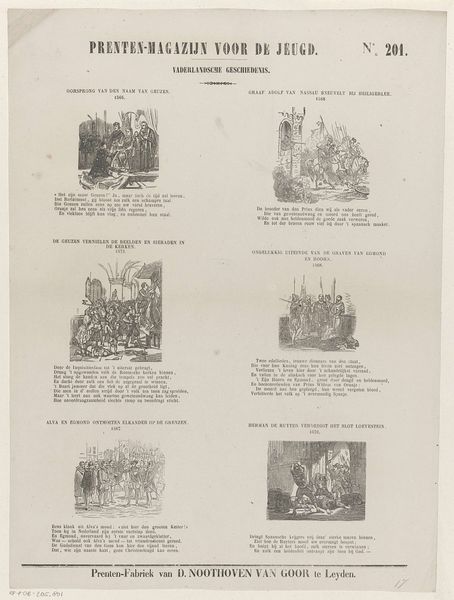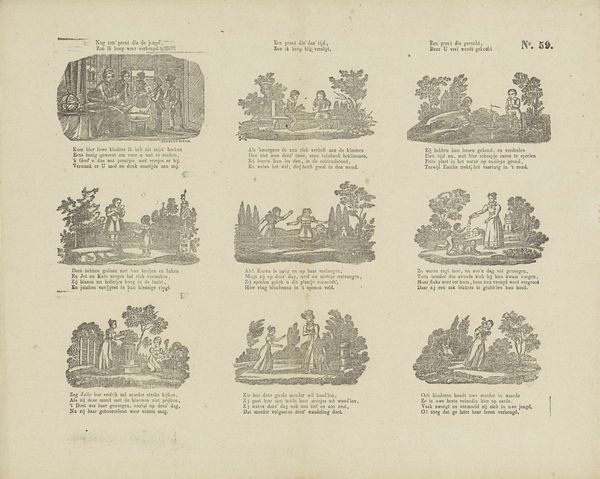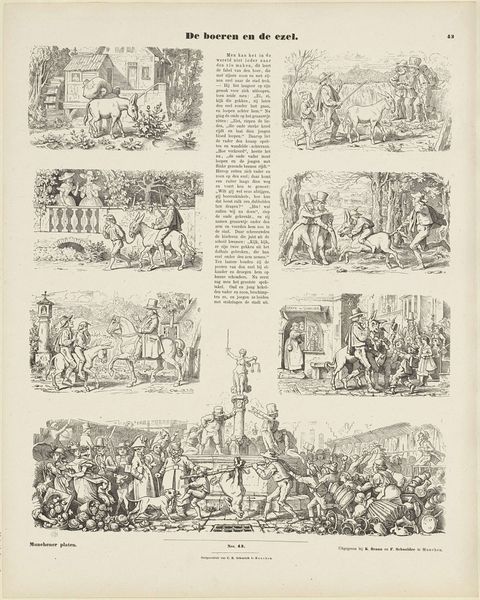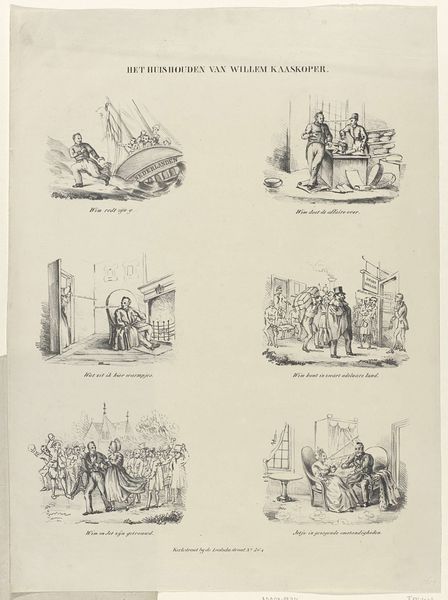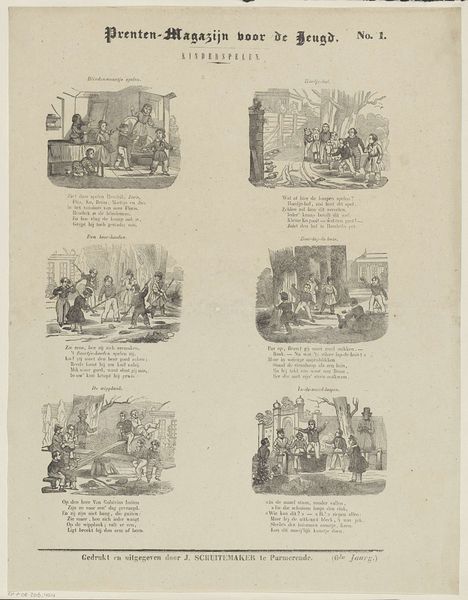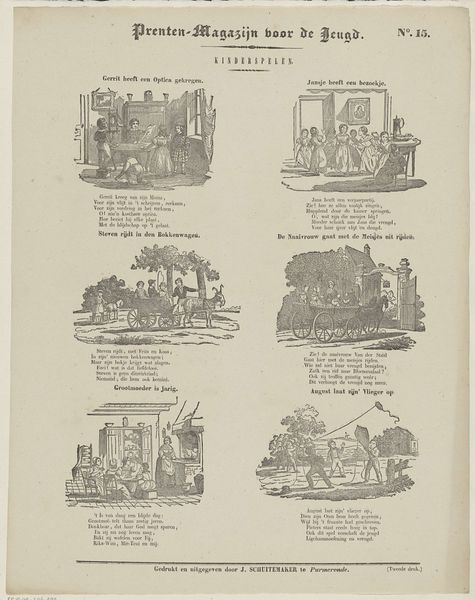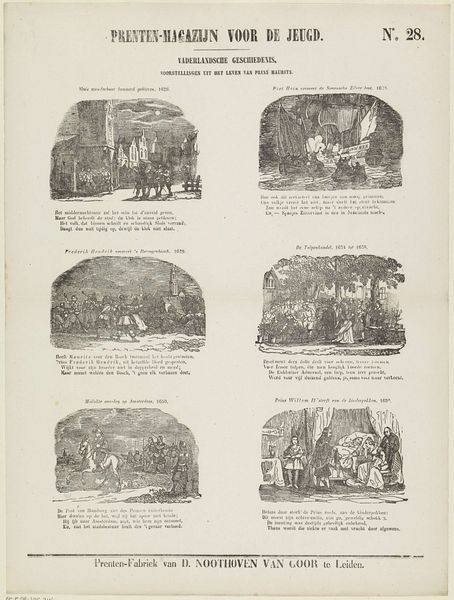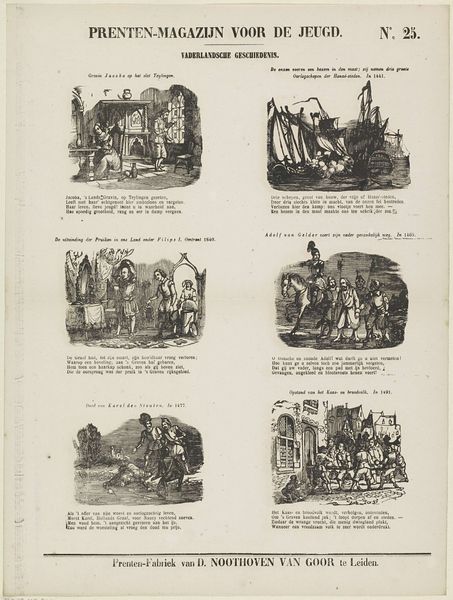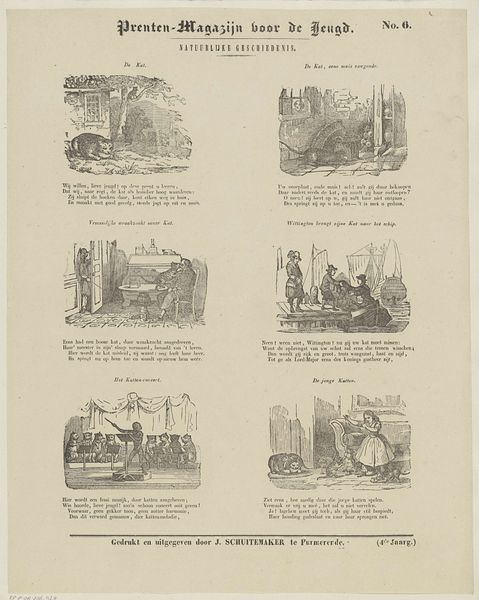
graphic-art, lithograph, print, engraving
#
graphic-art
#
narrative-art
#
lithograph
# print
#
history-painting
#
engraving
Dimensions: height 411 mm, width 295 mm
Copyright: Rijks Museum: Open Domain
Curator: What a busy composition. It looks like multiple historical events all crammed together. Editor: Indeed. We are looking at an interesting graphic work by Dirk Noothoven van Goor, entitled "Voorstellingen uit de Hoeksche en Kabeljaauwsche twisten," created sometime between 1850 and 1881. These monochrome lithographs illustrate key moments from the Hook and Cod wars in the Netherlands. It appears to have been part of a series intended for young audiences. Curator: That makes sense. The vignettes feel like they’re attempting to encapsulate complex historical events into accessible snapshots. I notice the dense line work gives each scene a certain dramatic intensity, although the perspective feels rather flat. It's very illustrative, very focused on clearly conveying actions and settings, not necessarily a deep engagement with realism. Editor: Exactly. The formal constraints of printmaking undoubtedly shaped the visual style. Van Goor was likely aiming for clarity and reproducibility. More broadly, one might interpret these illustrations as serving a didactic purpose, instilling a sense of national identity and historical consciousness in young Dutch citizens through visual narratives that dramatize and, perhaps, simplify complex political conflicts into understandable stories of strife and resolution. Curator: Yes, there’s a definite sense of national myth-making. Each framed panel offers a miniature stage for power struggles and moments of heroic action. I am curious about how this imagery affected the political views of Dutch children in that time period, as the narrative here, rendered in print, helped solidify ideas of heroism, power, and Dutch history in their formative minds. The scenes are clearly not objective documentation, they embody and reinforce certain political viewpoints through art. Editor: Precisely. Understanding such historical imagery allows us to reflect on the enduring influence of visual media on shaping public consciousness and promoting cultural values across generations. I agree. Curator: It is thought-provoking to analyze not just the subject of the images but also the context in which those images were received and the sociopolitical role that these visuals had at that time.
Comments
No comments
Be the first to comment and join the conversation on the ultimate creative platform.
